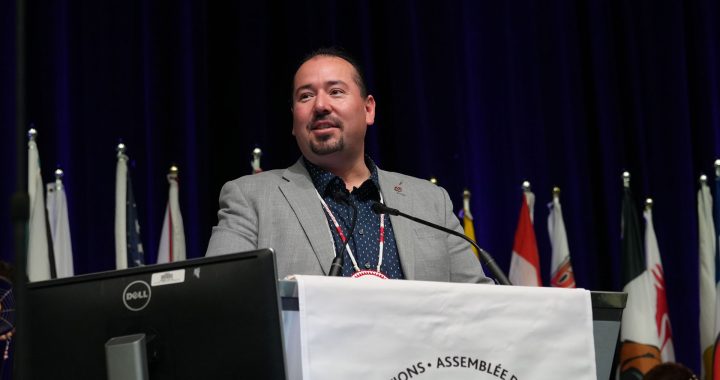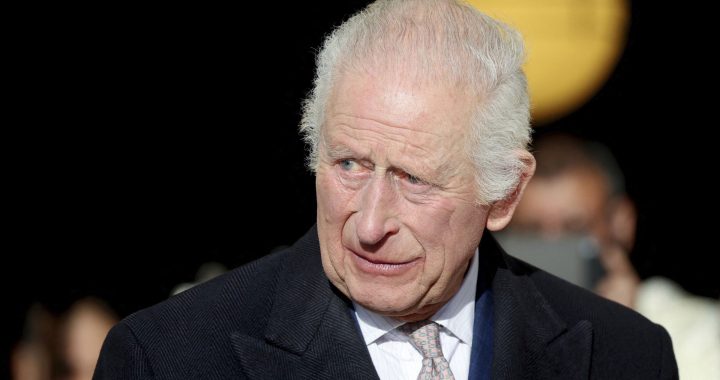(Former prime minister Stephen Harper after delivering apology to residential school survivors in 2008. APTN/File)
Jorge Barrera
APTN National News
The previous Conservative government of Stephen Harper stymied the search for children who died throughout the over century-long existence of Indian residential schools, according to the final report of the Truth and Reconciliation Commission.
The Truth and Reconciliation Commission (TRC) released its final report Tuesday in Ottawa, marking the end of a six year, cross-country process that heard the testimony of about 7,000 Indian residential school survivors.
About 150,000 Indigenous children were cycled through the Indian residential school system, which was operated by Churches on behalf of the federal government. One of the enduring questions from this dark era remains around the exact number of children who died at these schools from disease, from suicide, from failed escapes and from accidents.
While Harper is credited with issuing an apology for Indian residential schools in 2008—which came after Ottawa finally reached a multi-billion dollar settlement with residential school survivors—his government hindered the TRC’s efforts to get a grasp on the level of death at these schools, according to the TRC’s report.
Six of the TRC’s 94 calls to action deal with continuing to document residential school deaths along with finding and preserving the places children are buried. The new federal Liberal government of Justin Trudeau has committed to implementing all the calls to action.
In the spring of 2007, at the request of former Conservative Indian affairs minister Jim Prentice, the TRC created a working group—which included archivists, representatives of Indigenous organizations, former students and federal government officials—to focus on the children who died at the schools and to find the places where they were buried.
Prentice was responding to calls from former Liberal MP Gary Merasty who raised the issue of dead children in the House of Commons. Prentice promised to “get to the bottom of the disappeared children.”
When the working group determined that the scope of the work needed to “get to the bottom” of the number of deaths in the residential school system would require at least $1.5 million in additional funding, former Conservative Indian affairs minister Chuck Strahl decided in 2009 they wouldn’t get the money, the report said.
“The federal government’s denial of this request has placed significant limits on the commission’s ability to fully implement the working group’s proposals, despite our sincere belief in their importance,” said the report.
On top of this, the protracted battle between the Harper government and the TRC over the release of relevant residential school documents, which included a court ruling against Ottawa in January 2013, also hampered the search for the dead children.
“Since that date, there has been considerable improvement in the production of documents to the commission. Nonetheless, the delay in clarifying Canada’s obligation means that the production of documents to the (TRC) is still continuing,” said the report. “It has not been possible to review all recently produced documents and to make the required adjustments to the National Residential Student Death Register by the time of this report.”
As it stands now, based on incomplete data, the TRC has been able to identify the deaths of 3,201 children in the residential school system. TRC Chair Murray Sinclair has said the real number is at least 6,000, if not much higher, potentially five times as large.
Currently, the National Residential Student Death Register contains the records of only 2,040 student deaths between 1867 and 2000 which includes the names of the children. Within that same time span the commission managed to confirm 1,161 unnamed deaths of students, according to the report.
Using only the 3,201 figure the TRC managed to confirm, the most deaths occurred at schools in Alberta with 821, followed by British Columbia with 580 deaths. Saskatchewan recorded 566 deaths, Ontario 426, Manitoba 338, Northwest Territories 252, Yukon 74, Quebec 38, Nova Scotia 15 and Nunavut 15.
The records are also afflicted by gaps in identifying gender and cause of death. It was an issue Commissioner Marie Wilson raised during the ceremony in Ottawa Tuesday when she directly addressed the dead students, who were represented on the stage by two empty chairs.
“We know that a quarter of you left this world without the dignity of having your name recorded. A third of you left without anyone noting whether you were a boy or a girl. And fully half of you passed on without the cause of death being recorded,” said Wilson.
The TRC report said that Quebec, Ontario and Saskatchewan have yet to turn over their own provincially held death records that could help with the search to identify the children who died at the schools. Alberta, B.C., Manitoba, the Northwest Territories, New Brunswick, Nova Scotia and Prince Edward Island have all turned over death records to aid in the search, said the report.
Residential school students in Newfoundland and Labrador were not included in the final Indian residential school settlement agreement.
The TRC’s final report also concluded that the search for the cemeteries were these children are buried needs to continue because the commission failed to locate them all. Many of the gravesites the commission did find have been abandoned.
“For the most part, the cemeteries that the commission documented are abandoned, disused and vulnerable to accidental disturbance,” said the final report. “It is apparent that there are likely to be other unidentified residential school gravesites across the country.”
The report called for a national program to identify all unmarked residential school cemeteries and gravesites across Canada.
Still, the TRC’s final report concluded it may now be impossible to ever truly and conclusively determine the exact number of child deaths at residential schools and to find the places where they are buried.
Many government records that could have shed light on this issue have been destroyed, up to 15 tonnes worth of paper, the report said. At least 200,000 records were destroyed by Indian Affairs between 1936 and 1944. Health Canada records were also regularly destroyed.
“It is probable that there are many student deaths that have not been recorded in the register because the record of death has not been located. There a number of instances where the only mention of a specific student death is in a church document, but there is no recorded indication of it in any Indian Affairs document that the commission could locate,” said the report. “There also exists the possibility that the death may not have been reported at all.”
@JorgeBarrera











I consider all these deaths murder because they shouldn’t have been there in the first place. These kids and the survivors are victim’s of terrorism committed by the government and churches. These numbers are added to the hundred million+ indigenous people killed in the largest genocide in human history. They can never pay back what is owed. More people need to open there eyes and see what’s happening here.
“One of the enduring questions from this dark era remains around the exact number of children who died at these schools from disease, from suicide, from failed escapes and from accidents.”
Or murder.
Apprive
Sent from my BlackBerry 10 smartphone on the TELUS network.
this is the most socially accepted genocide denial I know of. i mention that two months ago a federal judge declared genocide WAS committed (not “attempted”) in canada and only ended in the last 30 years. its been legally declared. yet people tell me “no” and that its only my opinion when i mention it. and i work among highly educated professionals. 😛
So heartbreaking and so many innocent children lost. Let’s hope that now the report has been released that promises will be kept. Nothing can replace the lives lost or ruined by ignorant European settlers but this white woman wants to see justice. Better late than never and it’s all we can do. Praying it’s enough to heal the hurts at last.
“the most deaths occurred at schools in Alberta with 821”
whether it’s the abuse of animals, the abuse of nature, or the abuse of indigenous people, alberta seems to top the list time and again as being among the worst offenders. shameful.